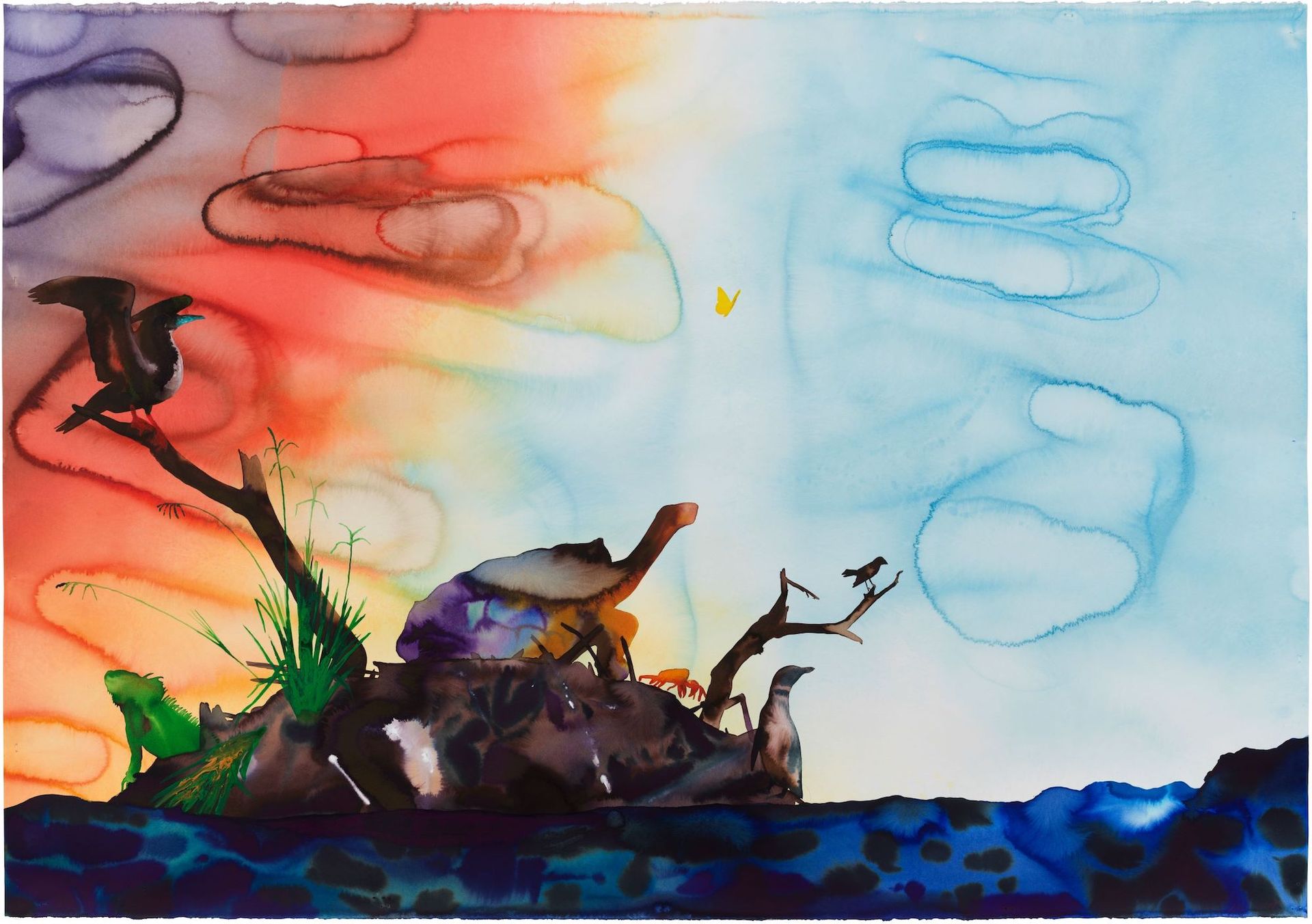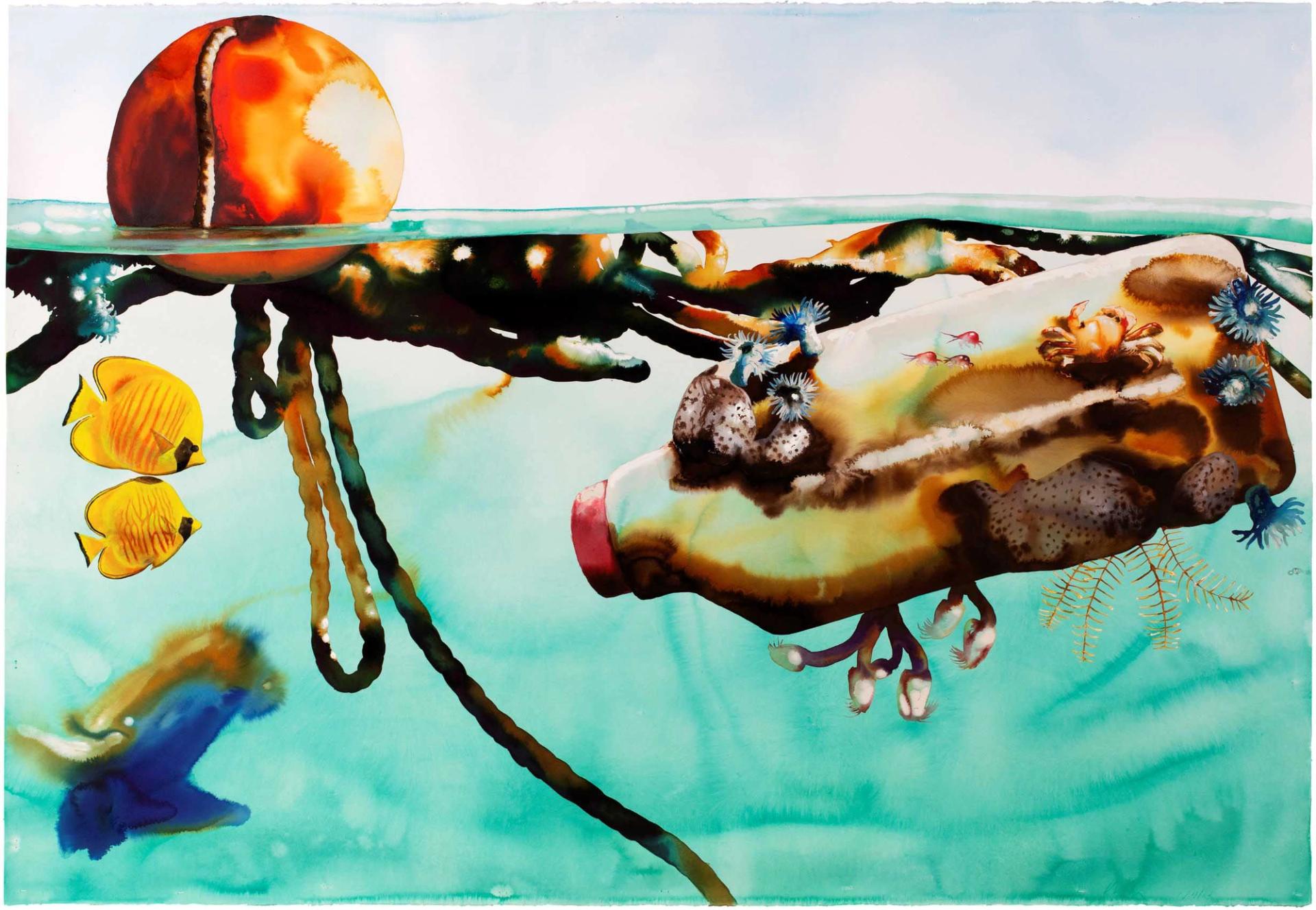For the first time in nearly 100 years of history, the Mystical Seaport Museum in Connecticut discusses the impact of maritime industries on ocean ecosystems. This new initiative is launched in collaboration with Oceanus (until spring 2024), an exhibition of paintings commissioned by New York artist Alexis Rockman.
Known for his captivating depictions of pressing climate issues, Rockman’s work for the museum focuses on activities that take place below the water’s surface, particularly the connection between shipping and the introduction of invasive species. The exhibition marks an important moment in the history of the museum as the first exhibition devoted to contemporary art.
“Museums should use their platform to inspire positive social change through awareness and conversation,” says Christina Connett Brophy, senior vice president of the museum. “We took a critical look at the impact of maritime activities on the world’s oceans, starting with our own Mystic River, which is now teeming with introduced species brought here in the ballast of ships and attached to their hulls.”
The highlight of the museum’s watercraft collection, for example, is the Charles W. Morgan, a mid-19th century whaler that probably traveled a million miles carrying sand, microbes, plants and sea animals around the world. The museum studies these materials attached to its ships through research conducted in partnership with James Carlton, the director emeritus of Williams-Mystic, the Coastal and Ocean Studies Program at Williams College, and the Mystic Seaport Museum. “Dr. Carlton continues to discover new species arriving in our waters every year,” Brophy says.
The history of navigation and its impact

Alexis Rockman, Rafting on the Humboldt Current2022 Courtesy of the artist, Mystic Seaport Museum, Mystic, Connecticut
Rockman’s exhibition takes this research as a starting point. Among the 11 new works, a monumental oil painting gives its name to the exhibition. At nearly 24 feet long, Oceanus (2022) offers a remarkably detailed look at the history of the sea and the underwater worlds it impacts. At the top of the work are accurate depictions of 22 ships, 16 of which are based on models in the museum’s collection. Arranged in chronological order, the watercraft begin with examples of indigenous communities, including a Pequot muhshoon (dugout canoe), and end with a crowded freighter, a refugee raft and an illegal fishing boat. Interspersed with evidence of human impact on the ocean, such as fishing, whaling, fossil fuel extraction and transportation, and the many species living in the ocean. The artwork features more than 50 meticulously rendered examples of marine life – from whales and sharks to turtles and sea anemones – identified in a caption that accompanies each piece in the show.
“My challenge was to take many historical models of seagoing vessels and create a compelling painting with those objects and the corresponding resources that were mined by them,” Rockman explains. “I hope this will create an almost encyclopedic picture with many global issues that the oceans are and will continue to be faced with due to human activity.”
In addition to Oceanusthe museum commissioned Rockman to create ten large-scale watercolors, also rich in scientific detail. transitional passage (2022), for example, is based on research by Carlton, Linsey Haram and Greg Ruiz examining how coastal animals survive hundreds of miles from shore by colonizing plastic pollution. Giving visual form to this research, Rockman’s work depicts various marine organisms thriving on a discarded plastic bottle.

Rockman’s transitional passage (2022), a large-format watercolor resulting from research on plastic pollution Courtesy of the artist and the Mystic Seaport Museum
Many watercolors are overlaid with art historical references, including Rafting on the Humboldt Current (2022), an image of plants and animals using a raft to colonize new habitats reminiscent of Emanuel Leutze’s Washington crossing the Delaware (1851). In Melancholy, Simultaneously exhibiting Rockman at Sperone Westwater in New York (until July 28), it offers other poetic images of climate change in scenes of calving icebergs and melting glaciers that weave into character references. art histories such as Clyfford again.
“Painting can do many things that can’t be done in other parts of our culture,” Rockman says. “The painting is visceral, intimate and larger than our own scale. I hope the exhibition can [convey] some of the issues and challenges facing the ocean in a hard-hitting way.
To accompany the exhibit, the museum is highlighting the efforts of the so-called “blue economy” – a movement to use ocean resources sustainably – with an installation of such products, including items made from kelp, seaweed and lionfish skin, as well as technologies for studying the ocean.
“All museums seek to stay relevant to visitors, expand our audiences, and inspire meaningful dialogue,” Brophy says. “For maritime museums, this means thinking about the stories that will be important in the future and how we can be a real source of discussion. I hope our partner institutions will join this conversation, because we all have something to contribute.
